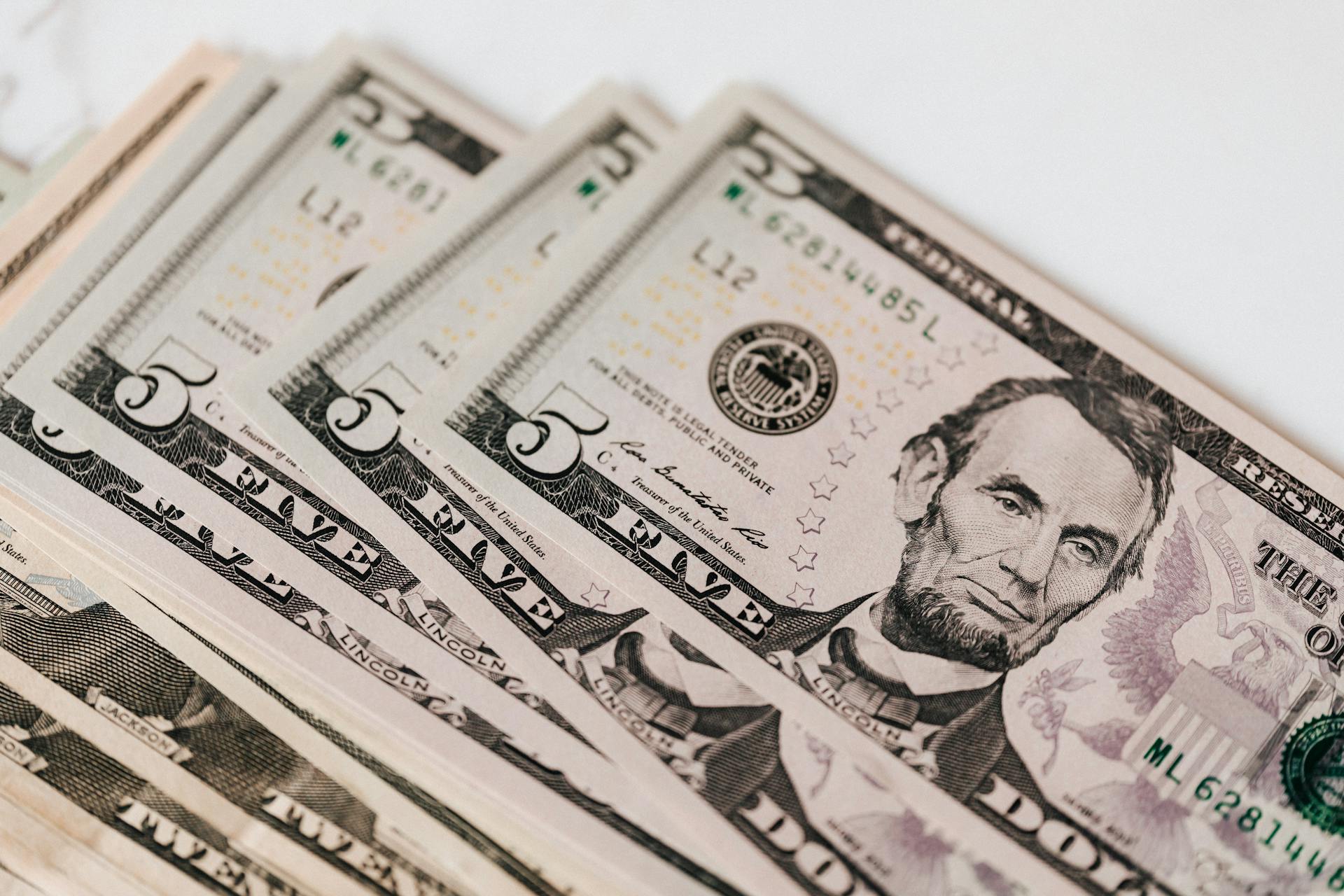
Return on Net Operating Assets (RONOA) is a vital metric for businesses to evaluate their financial performance. It calculates the return on a company's net operating assets, which are its total assets minus its debt.
RONOA helps businesses identify areas for improvement by comparing their net operating assets with their earnings. This comparison can reveal whether a company's assets are generating sufficient revenue.
By understanding RONOA, businesses can make informed decisions about investments, cost-cutting measures, and resource allocation. This, in turn, can lead to increased efficiency and profitability.
RONOA is often used in conjunction with other financial metrics, such as return on equity (ROE) and return on assets (ROA), to provide a comprehensive view of a company's financial health.
See what others are reading: Net Equity Net Assets
What Is an Asset?
An asset is anything that has value and can be owned or controlled to generate future economic benefits. This can include physical objects, intellectual property, and even intangible concepts.
Assets can be tangible, like a piece of equipment or a building, or intangible, like a patent or a brand name. For example, a company might own a factory, which is a tangible asset, or a trademark, which is an intangible asset.
To be considered an asset, something must have a measurable value and be expected to generate future income or savings. This can be a one-time payment or ongoing revenue streams.
Calculating NOA

Calculating NOA is a straightforward process that involves identifying the company's operating assets and liabilities.
To start, you need to determine the total value of your operating assets, which include inventory, accounts receivable, cash and bank, and property, plant, and equipment (PPE). These are the assets directly tied to your core operations.
You can find the total value of your operating assets by adding up the values of these assets on your balance sheet. For example, if your inventory is worth $8,000, accounts receivable is worth $12,000, cash and bank is worth $2,000, and PPE is worth $4,000, your total operating assets would be $26,000.
Next, you need to calculate the total value of your operating liabilities, which include accounts payable and other payable. These are the liabilities necessary for your operations to sustain themselves.
You can find the total value of your operating liabilities by adding up the values of these liabilities on your balance sheet. For example, if your accounts payable is worth $3,000 and other payable is worth $1,000, your total operating liabilities would be $4,000.
Suggestion: What Are Current Asset Accounts

Once you have determined the total value of your operating assets and liabilities, you can calculate your net operating assets (NOA) by subtracting your operating liabilities from your operating assets.
For example, if your total operating assets are $26,000 and your total operating liabilities are $4,000, your NOA would be $22,000.
Here's a summary of the steps to calculate NOA:
For instance, if your total operating assets are $10 million and your total operating liabilities are $6 million, your NOA would be $4 million.
On a similar theme: Total Asset Turnover Is Computed as Net /average Total Assets.
Benefits of Using
Using return on net operating assets (RONOA) can be super helpful in understanding how well a business is using its assets. It gives investors an idea if the business is operating at its full potential.
One of the main advantages of RONOA is that it's easy to compare performance with other companies. This is because RONOA is represented in percentage terms, making it simple to assess comparative performance.
On a similar theme: Net Operating Assets Definition
To get the most out of RONOA, it's essential to compare it relative to competitors. A higher RONOA is generally desirable, as it indicates that a business is using its assets effectively to generate operating income.
Here are some ways to use RONOA:
- To compare how well a company is using its assets among companies that operate in the same industry and are engaged in similar business operations.
- On a trended basis to compare its current performance to its performance in the previous year.
RONOA can also help investors understand if the business management is using assets at their full potential. This can be a valuable insight, especially when evaluating the performance of a company over time.
Understanding NOA
Understanding NOA is a crucial step in calculating return on net operating assets. NOA stands for net operating assets, which is calculated by subtracting operating liabilities from operating assets.
To calculate NOA, you need to restructure your balance sheet to separate operating and financing operations. This means separating accounts like accounts receivable, inventory, and other accounts with "interest-bearing" characteristics from your operating assets.
Here are the steps to calculate NOA:
- Calculate your entire operating costs by adding up all your operating assets.
- Calculate the total value of your operational obligations by finding the outgoing payments on the income statement.
- Subtract total operating liabilities from total operating assets using the formula: NOA = Operating assets – Operating liabilities.
For example, if your total operating assets are $170,000 and your total operating liabilities are $85,500, your NOA would be $84,500.
Related reading: Wealthfront Performance vs S&p 500
What Is Liability?

Liability is a financial obligation that arises from business operations. It's a crucial aspect of a company's financial health.
Operating liabilities, for instance, come up during business operations and involve amounts payable to other businesses or individuals that remain outstanding. These liabilities also include expenses incurred for business-related operations.
Liability can be a result of various factors, including operating liabilities.
Intriguing read: Financial Performance Measures
How to Improve
To improve your Return on Net Operating Assets (RNOA), it's essential to focus on increasing net profit and the proportion of efficient assets.
Increasing net profit can be achieved by improving the efficiency of your asset base and increasing revenue, as well as controlling expenses across different categories. However, be sure not to compromise on quality aspects of operations.
One way to increase RNOA is to sell inefficient operating assets, which can lead to a higher return on net operating assets due to a lower value of the asset base. However, this may not be a long-lasting solution if adequate alternatives are not provided.
For your interest: Net Operating Profit after Taxes

Here are some key strategies to improve RNOA:
- Increase the efficiency of your asset base and revenue.
- Control expenses across different categories.
- Purchase new operating assets, which are expected to be more efficient and lead to higher profitability in the long term.
- Sell inefficient operating assets to reduce the asset base and increase RNOA.
By implementing these strategies, you can improve your RNOA and achieve long-term business efficiency and financial stability.
Remember, investors are more interested in the operating income or performance of the operating assets, making it crucial to focus on improving RNOA.
Sources
- https://www.profit.co/blog/kpis-library/finance/return-on-operating-assets/
- https://audithow.com/return-on-net-operating-assets-definition/
- https://corporatefinanceinstitute.com/resources/accounting/operating-return-on-assets-oroa/
- https://www.wallstreetprep.com/knowledge/net-operating-assets/
- https://adequatebookkeeping.com/net-operating-assets/
Featured Images: pexels.com


